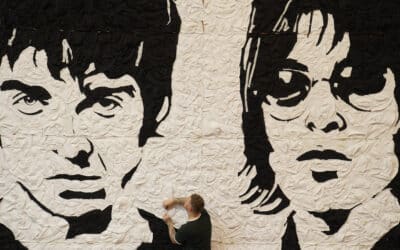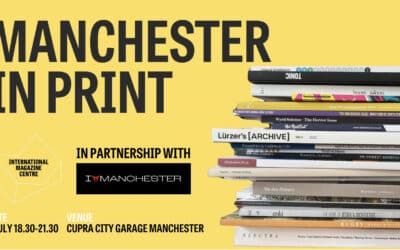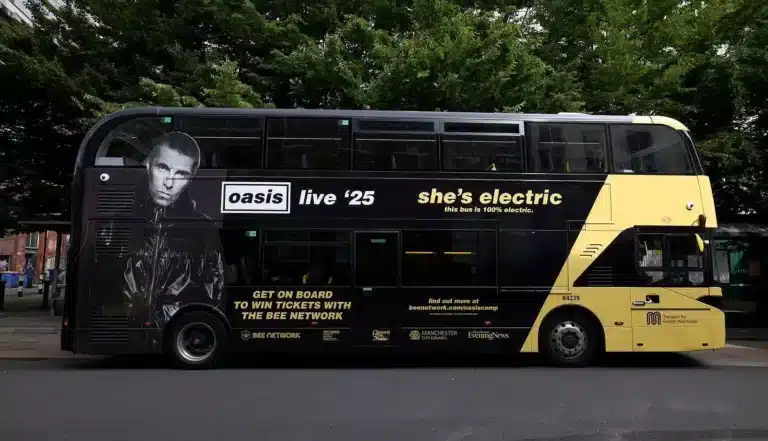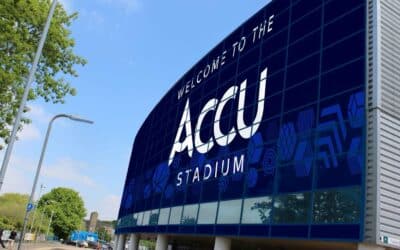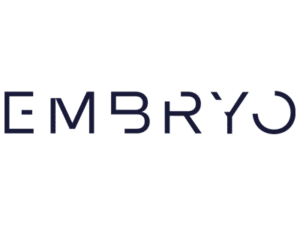In 1996, you could see Oasis live for £22.50. You might have hitchhiked to the gig, bunked on a mate’s sofa, and queued outside a record shop to buy your ticket. No presale codes. No bots. No booking fees. The adventure was part of the experience.
“You could smell the sweat, the smoke, and the lager before you even walked through the doors,” said author Paul Carroll, whose fictional, satirical account of an Oasis reunion on a wind-powered eco-island Be Here Now is available now. “It was rough and ridiculous. But it was real.”
Today, you’re paying £120 or more just to stand at the back – if you’re lucky enough to get past the digital queue. Front-row seats are snapped up in seconds. The merch has doubled in price. The pints have tripled. And if you want a VIP pass, prepare to spend over £500.
Something fundamental has changed, Carroll thinks.
And it’s not just about cost. The live music experience has become more managed, more manicured, more mediated. From ticket sales to setlists, from merch to meaning – the spirit of gig culture has been reshaped by algorithms, access codes and content strategies.
READ MORE: Faux Scot enjoys 90-minutes of BBC airtime. Irish and blacks less fortunate
“In the 90s, the gigs were loud, messy and unpredictable,” says Carroll. “Now they’re safer, smoother and more expensive. You don’t queue with strangers. You get a QR code and a drink token. It’s not necessarily worse. But it’s not the same.”
A new report, released to support the launch of Be Here Now: The Great Oasis Reunion Gig of 2029, explores how everything from access and affordability to identity and emotional meaning has evolved since the 1990s heyday of British music culture.
The novel imagines the world’s first greenwashed mega-gig, set on a fictional eco-island in the North Sea. The Gallagher brothers are back. The branding is relentless. The sustainability promises are suspect. And the chaos is still very real.
“Backstage, it’s still the same mess. The same rapacious promoters. The same fragile egos. The same chaos you can’t quite iron out of live music,” he says.
Carroll’s story lands at a moment when a real-life Oasis reunion is happening. But the book – and the accompanying report – ask a deeper question:
Can rock and roll survive the polished, pre-packaged, tightly-managed world that live music has become?
Tickets for the upcoming gigs range from £120 to £350, with VIP packages topping £500. Securing one means braving digital queues, presale codes, and bots. Accommodation? Expect £180 a night in city centres, with hotels near big venues spiking by 200% during major gigs. And that £3 pint? Now £6–£9 – cashless only.
Access has become gated not just by money, but by tech and timing.
In the 90s, all you needed was twenty quid and the right jacket. Today? It’s apps, alerts, and algorithms – or you’re out of luck.
In the 90s, discovering music meant Top of the Pops, listening to Peel on Radio 1, or swapping mix tapes with your mates. You queued at Virgin Megastore on release day, listened to an album start to finish, and memorised every lyric.
Today, music is instant and infinite.
Spotify’s algorithm recommends your next obsession. TikTok can launch – and end – a career in a week. Albums drop without warning and are consumed in fragments. Instead of fanzines, fans scroll through reaction videos, influencer commentary, and meme reviews.
Access to artists has exploded. Fan clubs have been replaced by Instagram Q&As, Cameo shoutouts, and Discord AMAs. Artists now curate their brand 24/7.
What used to take months of build-up – radio plays, magazine covers, exclusive interviews – now unfolds in a 15-second TikTok. Fans used to absorb every detail. Now they swipe and move on.
The thrill of discovery hasn’t disappeared. But it’s faster, flatter, and far more fleeting.
This summer, thousands will relive their Britpop youth. But while the soundtrack might be the same, the gig experience has been completely restructured – by tech, money, and marketing.
“The music’s still brilliant. But the vibe’s different,” Carroll explained. “In the 90s, half the fun was the unpredictability. Now the journey’s an itinerary. A QR code. A presale password.”
He’s not pining for the past – but he is inviting people to ask what’s changed, and what’s been lost.
“It’s not about saying one era was better,” he added. “It’s about noticing how things have shifted. The gigs, the fans, the meaning. That’s what Be Here Now is really about.”
As a PR, Carroll helped launch the Nynex Arena in Manchester (now the AO) and worked closely with bands as they rose from pub gigs to sell-out stadiums. Be Here Now is out now in paperback and ebook, published by DreamEngine.

